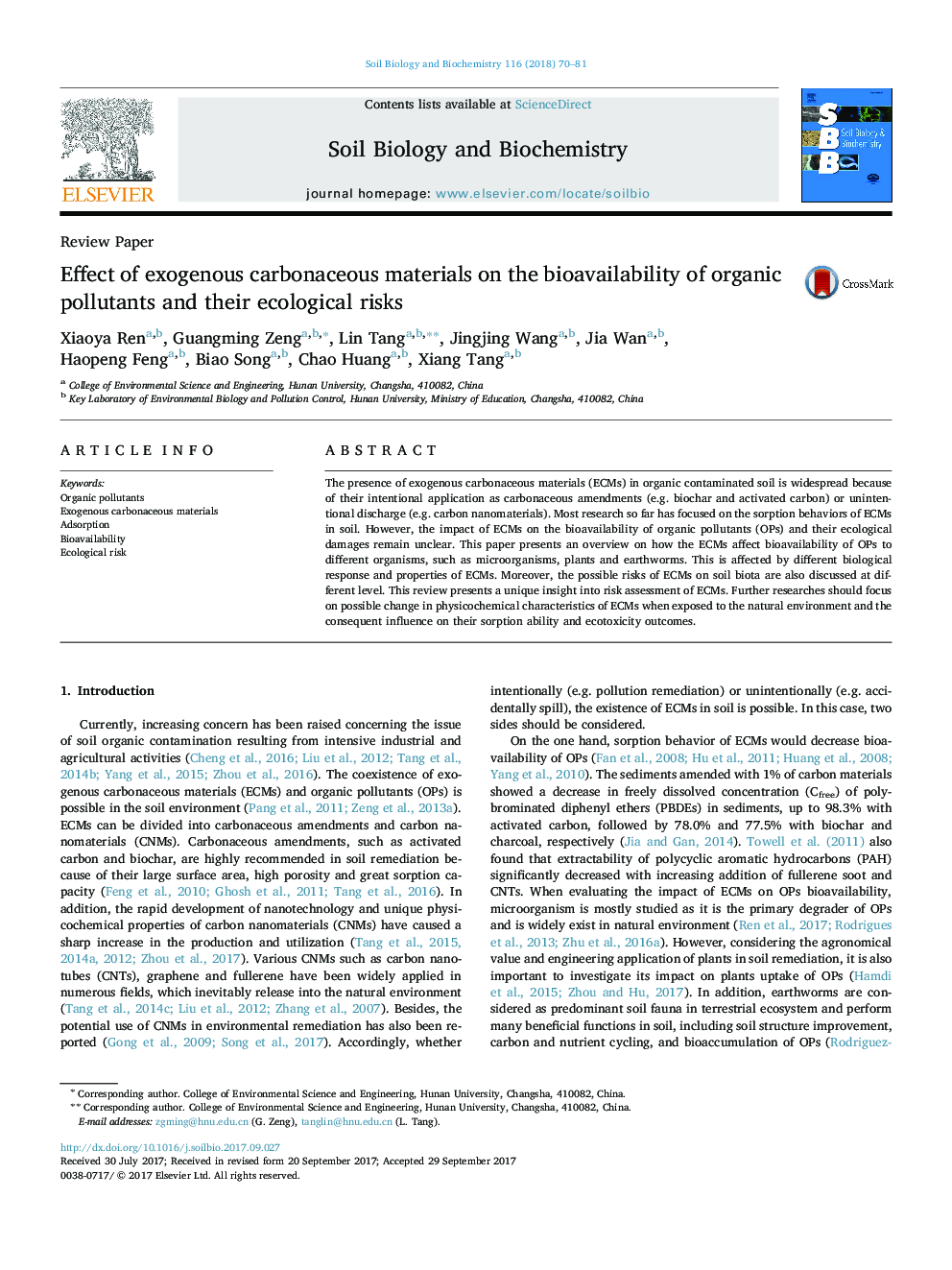| Article ID | Journal | Published Year | Pages | File Type |
|---|---|---|---|---|
| 5516210 | Soil Biology and Biochemistry | 2018 | 12 Pages |
â¢Exogenous carbonaceous materials and biological response affect the bioavailability of organic pollutants.â¢ECMs could be co-contaminant and adversely affect soil organisms.â¢The sorption capacity and ecotoxicity of ECMs could be changed when exposed to the natural environment.
The presence of exogenous carbonaceous materials (ECMs) in organic contaminated soil is widespread because of their intentional application as carbonaceous amendments (e.g. biochar and activated carbon) or unintentional discharge (e.g. carbon nanomaterials). Most research so far has focused on the sorption behaviors of ECMs in soil. However, the impact of ECMs on the bioavailability of organic pollutants (OPs) and their ecological damages remain unclear. This paper presents an overview on how the ECMs affect bioavailability of OPs to different organisms, such as microorganisms, plants and earthworms. This is affected by different biological response and properties of ECMs. Moreover, the possible risks of ECMs on soil biota are also discussed at different level. This review presents a unique insight into risk assessment of ECMs. Further researches should focus on possible change in physicochemical characteristics of ECMs when exposed to the natural environment and the consequent influence on their sorption ability and ecotoxicity outcomes.
Graphical abstractDownload high-res image (278KB)Download full-size image
